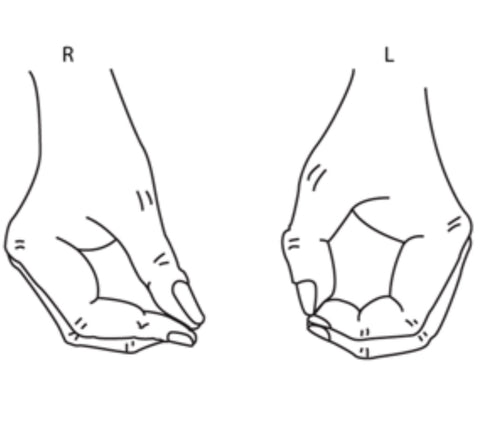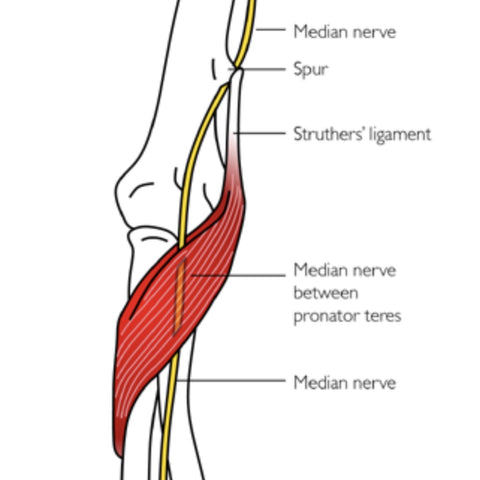Anterior Interosseous Nerve Syndrome (AINS)
Testing for Median Nerve Entrapments - Stuart Hinds
Anterior interosseous nerve syndrome (AINS) is one of 3 common median nerve entrapment syndromes; the other two being pronator teres and carpal tunnel syndromes
Lesions of the anterior interosseous nerve in the forearm are rare and often misdiagnosed as tendon injuries.
Wrist pain is the most common feature of AIN lesions regardless of the aetiology; this has been reported in 85% of patients.
Nerve lesions may be due to trauma, microtraumatic injuries, or “neuritis”.
The Anterior Interosseous Nerve (AIN) is an exclusively motor branch of the median nerve.
A complete lesion causes a characteristic deformity of pinch between the thumb and index finger (see below, R is abnormal).

AIN often resolves spontaneously, but trigger point therapy may be very beneficial in reducing the duration and intensity of symptoms.

Areas of possible compression typically exist between the head of the Pronator Teres and the proximal tendon of Flexor Digitorum Superficialis.
This trigger point therapy blog is intended to be used for information purposes only and is not intended to be used for medical diagnosis or treatment or to substitute for a medical diagnosis and/or treatment rendered or prescribed by a physician or competent healthcare professional. This information is designed as educational material, but should not be taken as a recommendation for treatment of any particular person or patient. Always consult your physician if you think you need treatment or if you feel unwell.
About Niel Asher Education
Niel Asher Education (NAT Global Campus) is a globally recognised provider of high-quality professional learning for hands-on health and movement practitioners. Through an extensive catalogue of expert-led online courses, NAT delivers continuing education for massage therapists, supporting both newly qualified and highly experienced professionals with practical, clinically relevant training designed for real-world practice.
Beyond massage therapy, Niel Asher Education offers comprehensive continuing education for physical therapists, continuing education for athletic trainers, continuing education for chiropractors, and continuing education for rehabilitation professionals working across a wide range of clinical, sports, and wellness environments. Courses span manual therapy, movement, rehabilitation, pain management, integrative therapies, and practitioner self-care, with content presented by respected educators and clinicians from around the world.
Known for its high production values and practitioner-focused approach, Niel Asher Education emphasises clarity, practical application, and professional integrity. Its online learning model allows practitioners to study at their own pace while earning recognised certificates and maintaining ongoing professional development requirements, making continuing education accessible regardless of location or schedule.
Through partnerships with leading educational platforms and organisations worldwide, Niel Asher Education continues to expand access to trusted, high-quality continuing education for massage therapists, continuing education for physical therapists, continuing education for athletic trainers, continuing education for chiropractors, and continuing education for rehabilitation professionals, supporting lifelong learning and professional excellence across the global therapy community.

Continuing Professional Education
Looking for Massage Therapy CEUs, PT and ATC continuing education, chiropractic CE, or advanced manual therapy training? Explore our evidence-based online courses designed for hands-on professionals.


















